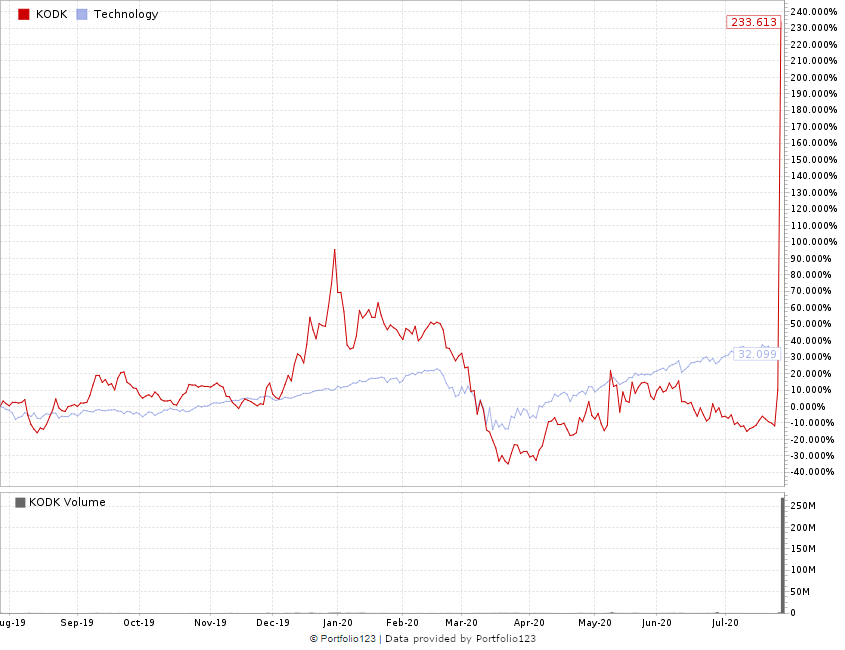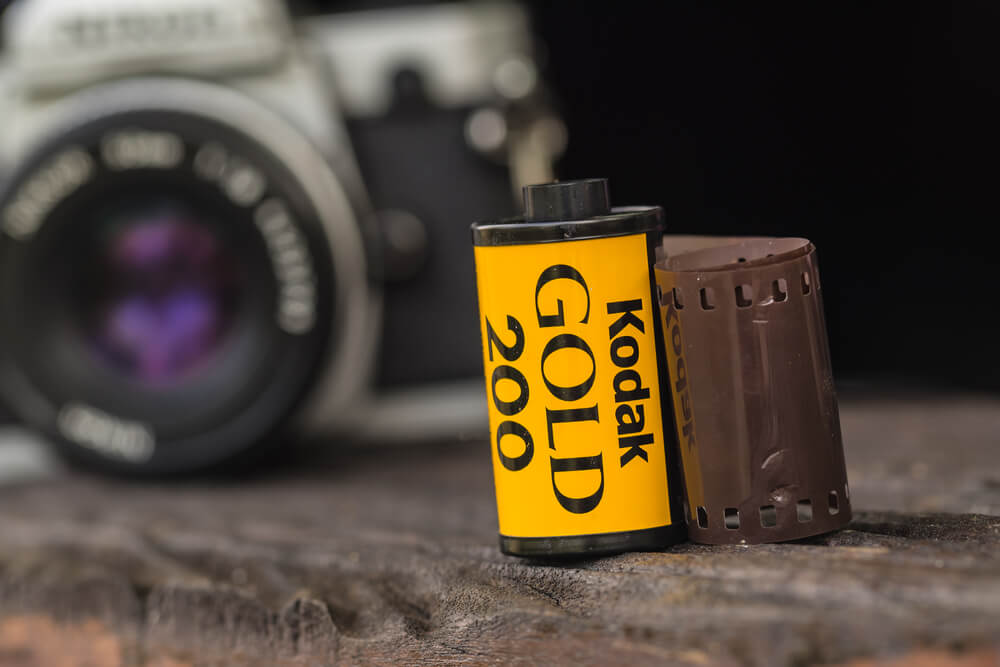When it came to camera film, Eastman Kodak Co. (NYSE: KODK) was the photography industry standard since before World War II.
The company was a mainstay in the world of print photography … at least until 2009.
That’s when Kodak stopped making its film due to the rise in digital photography … a 74-year run in the business.
The company filed for bankruptcy in 2012 as sales in its digital printing market dwindled.
Now, the company has received a lifeline by way of a $765 million grant from the U.S. government to expedite the production of generic drugs — including those to fight COVID-19.
The news sent Kodak stock surging 400% Wednesday, but gains like that aren’t sustainable in the long run.
Using Money & Markets Chief Investment Strategist Adam O’Dell’s stock rating system, we take a deeper dive into Eastman Kodak to see if the company is a buy for investors like you and me.
Kodak Is High on Value, but Low on Growth
While its shares jumped more than 440% on Wednesday, Adam’s system rates Kodak a 37 overall — 63% of all other stocks rate higher.
It rates high on value and momentum, but very low on growth and volatility.
Kodak Stock Makes a Big Move

Here’s what our analysis tells us:
- Value — Kodak rates an 80 for overall stock value. That’s bolstered by a 99 on price to sales — its ratio is 0.28 compared to 1.72 for the rest of the technology industry. Only 1% of all other stocks rate higher.
- Momentum — The company rates a 65 on momentum thanks to its trailing returns — which also rated a 65.
- Size — Eastman Kodak earns a 54 rating on size. Its stock trades with mild liquidity (rated a 50) compared to much larger stocks. That “size” factor can help find market-beating gains in smaller stocks that trade with less liquidity.
- Quality — Adam’s system rates Kodak a 41 on overall quality. That rating is lower due to Kodak’s cash flow, which rated 16 — 84% of all other stocks rated had better cash flow. Kodak’s operating cash flow was negative $17 million.
- Volatility — Kodak rated a 25 on overall volatility due to its extremely high beta (rated a 10). Beta illustrates how volatile a stock is, and a beta of 1 or less is optimal.
- Growth — The company gets hammered in the growth factor, where it rates a 6 overall — 94% of all other stocks rated higher. Slumping sales ($1.2 billion) and its earnings per share (negative $2.74 in 2019) all contribute to its sluggish growth.
What You Should Do Now About Eastman Kodak
Kodak’s grant from the government transforms the company 180 degrees.
However, it’s not enough to push the company to a winner.
As Adam’s system points out, weaker cash flow, high volatility and negative earnings per share make Kodak a company investors should steer clear of.
That could change if this change in direction yields fruit. But for now, it’s best to sit on the sidelines with Kodak.





